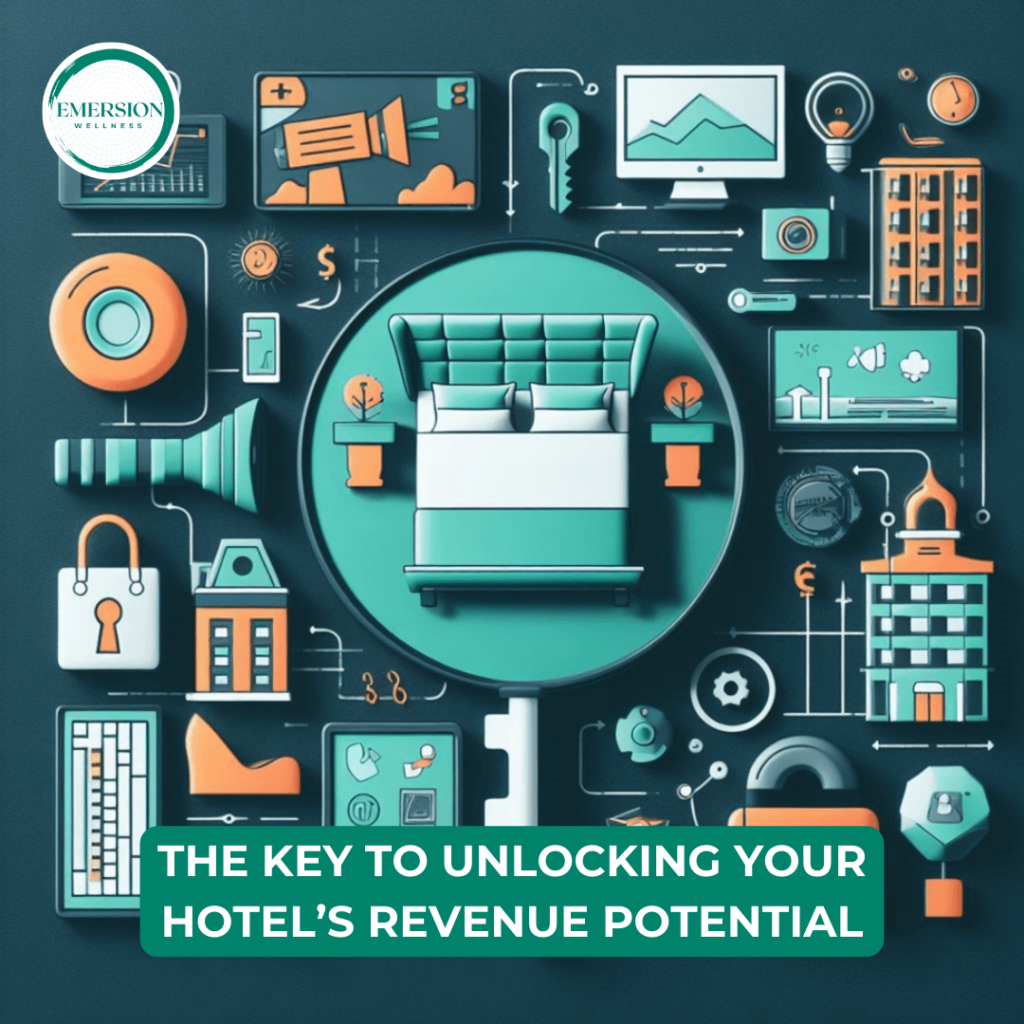As a hotel revenue manager in today's increasingly competitive lodging landscape, unlocking your property's full revenue potential is critical. However, where do you start with fluctuating demand and rising operating costs? The answer lies in understanding and optimising two key metrics - pickup and pace. Master these fundamentals, and you hold the key to driving hotel profitability.
This article will explore what pickup and pace mean, why they matter, and, most importantly, how to leverage them to rev up your revenue engine. Whether you manage a bustling urban high-rise or a cosy rural inn, you will discover innovative strategies to boost occupancy, ADR, and RevPAR. So, let's get started and unlock your hotel's path to profitability.
Table of Contents
Key Takeaways:
- Pickup and pace defined - understand what these metrics measure and why they matter
- Calculating and monitoring pickup and pace regularly
- Strategies to boost occupancy percentage pickup
- Tactics to increase ADR growth pace
- Maintaining rate integrity through dynamic pricing
- Aligning pickup and pace goals across departments
- Technology enabling data-driven decision making
What Are Pickup and Pace: The Key to Unlocking Your Hotel's Revenue Potential?
Defining Pickup
Pickup refers to the percentage of occupied room nights booked over a future date range. It measures a hotel's occupancy percentage increase as the arrival date approaches.
For example, if your hotel has 100 room nights available over the next 30 days, and only 40 are booked, your pickup would be 40%. As more nights get booked over time, pickups keep increasing.
Defining Pace
Pace shows the ADR growth rate over a future time. It indicates whether ADR is accelerating or decelerating compared to previous periods.
If your ADR for bookings made today for arrivals 30 days out is $100, but your ADR for 60 days out was $80, your pace is +25%. This fruitful pace shows strong ADR growth.
Why Pickup and Pace Matter?
Pickup and pace may seem simple, but understanding these metrics is vital to driving hotel revenue. Here's why they're critical:
Maximise Occupancy with Pickup to Increase Revenue Potential
Pickup measures room night demand growth. Low pickup indicates unsold inventory. Monitoring pickup helps you deploy targeted strategies to increase bookings and reduce vacancies.
Maintain Rate Integrity with Pace
Pace measures ADR growth trends. If the pace falls below targets, you may be discounting excessively. Tracking speed helps you maintain rate integrity and avoid underpricing.
Enable Data-Driven Decisions
Analysing pickup and pace metrics identifies opportunities to improve performance. You can course-correct challenges early and optimise revenue strategies using data-driven decisions.
How do you calculate and monitor pickup and pace?
It would be best to accurately calculate and regularly monitor these metrics to leverage pickup and pace. Here are some tips:
Calculate Pickup Daily
Compute pickup for each future date you have bookings. For example, calculate separate pickup percentages for arrivals 30, 60, and 90 days out.
Calculate Pace Weekly
Compute pace week-over-week to identify ADR growth trends. Compare ADR for arrivals 90 days out this week versus last week.
Set Pickup Targets to Revenue Potential
Based on historical occupancy data, set daily pickup targets for each booking window (30/60/90 days).
Set Pace Goals
Establish weekly ADR growth goals based on previous pace performance and future forecasts.
Monitor Trends
Review pickup and pace daily and weekly to catch negative variances from targets early.
Analyse Performance
Compare pickup and pace by market segment, channel, and room type to find problem areas.
5 Strategies to Boost Pickup
If pickup is lagging targets, here are five proven occupancy-boosting strategies:
1. Offer Advance Purchase Rates
Drive early bookings by offering 10-20% discounts for reservations made >30 days in advance. But close deals two weeks out to maintain the rate.
2. Promote Off-Peak Periods
Stimulate need-period demand by bundling value-adds like breakfast or parking for low occupancy dates.
3. Highlight Room Availability
Update calendars to highlight wide open dates and prompt scarcity-based bookings.
4. Review Booking Lead Times
Analyse booking windows by segment to create targeted promotions timed to spur reservations.
5. Leverage OTA Extranets
Use OTA extranets to update pricing/availability to stimulate last-minute bookings on high pickup dates.

6 Tactics to Increase Pace
If the pace is below target, here are six approaches to drive ADR growth:
1. Use Dynamic Pricing
Leverage data-driven algorithms to adjust prices based on demand to maintain rate integrity efficiently.
2. Manage Length of Stay Patterns
Restrict discounted longer stays during peak periods to reduce rate reductions.
3. Review Group Pricing
Negotiate higher group ADRs in line with transient rate growth to improve pace.
4. Highlight Value Offers
Bundle upgrades like breakfast, parking, or WiFi at marginal fees to grow ADR without discounting.
5. Implement Rate Fences
Use advance purchase or minimum stay requirements to segment guests and manage rates.
6. Monitor Competitor Pricing
Regularly shop competitive set rates and adjust pricing to lead market ADR growth.
Maintaining Rate Integrity
The key to revenue growth is driving occupancy without diluting ADR. To maintain rate integrity:
- Set daily pickup targets based on historic market-adjusted demand
- Establish weekly ADR pace goals aligned with forecasted growth
- Use data-driven pricing to balance occupancy and rate goals
- Resist across-the-board discounts and focus promotions on need dates/segments
- Highlight value over price with bundled offers vs rate reductions
Aligning Teams to Achieve Pickup and Pace Goals
Successfully driving pickup and pace requires alignment across teams:
Revenue Managers
- Set pickup and pace targets
- Lead data analysis and pricing strategy
Sales
- Develop targeted promotions to stimulate bookings
- Negotiate group rates in line with pace goals
Marketing
- Create campaigns highlighting value-adds and availability
- Promote advance purchase and off-peak offers
Front Desk
- Provide rate/value flexibility within defined parameters
- Gather guest feedback on pricing and positioning
By coordinating efforts, you enable data-driven decisions that balance occupancy with rate integrity for revenue growth.
Leveraging Technology for Actionable Insights
Advanced analytics technologies enable intelligence that drives pickup and pace performance:
- Demand forecasting optimises pickup targets
- Dynamic pricing maintains rate integrity
- Competitive intelligence measures market pace
- Reporting identifies problem areas
- Pickup and pace dashboards surface actionable insights
Integrating analytics and revenue management tech stacks unlocks the full revenue potential hidden within your pickup and pace metrics.
Final Word
Pickup and pace hold the keys to unlocking your hotel's profit potential. Master these fundamentals and gain data-driven insights to drive occupancy without diluting ADR. Coordinate across teams to balance pickup and pace using promotions, value-based offers, and optimal pricing. With the right strategies and technology, you can accelerate revenue growth and achieve performance that outpaces your competitive set.
Learn how Emersion Wellness's innovative revenue generation strategies can unlock your hotel's full revenue potential. Our team of experts will partner with you to maximise profitability.
Frequently Asked Questions
Q: How often should you measure pickup and pace?
A: Calculate pickup daily and pace weekly for optimal monitoring. Comparing daily pickup to targets quickly identifies booking shortfalls for swift revenue correction. Measuring pace week-over-week shows ADR growth acceleration or deceleration.
Q: What tools can help forecast pickup and pace?
A: Leverage demand forecasting and market intelligence technologies. Forecasting provides data to set realistic pickup targets, while competitive intelligence enables the development pace goals to be aligned with market conditions.
Q: How do you increase pickup for a specific room type?
A: Analyse pickup by room category to identify lagging segments. Use targeted promotions like advance purchase rates or value-added packages to stimulate bookings for weaker room types. Manage availability to prompt scarcity-based reservations.
Q: How can you maintain rate integrity during high-demand periods?
A: Use minimum stay requirements to limit discounted, more extended stays. Restrict heavily discounted rates to need periods only. Enable overbooking to accommodate exceptional demand but maintain price. Set automatic rate increases as sell-out dates approach.
Q: Should you offer the same rates on OTAs and direct bookings?
A: Avoid wide OTA disparities, which train guests to shop rates, diluting ADR. However, consider a small ($5-10) premium for direct bookings to nurture guest lifetime value beyond a one-time OTA sale.
Q: How often should you review competitor pricing?
A: Check competitive sets rates weekly when calculating pace to confirm your hotel leads market ADR growth. Monitoring competitor pricing ensures you don't diverge significantly in price.
Q: How can you drive direct bookings to improve pickup?
A: Offer an advance purchase rate only on direct channels to incentivise early reservations. Promote direct member rates and highlight free cancellation on direct bookings to encourage direct relationships.
Q: What is the best practice for offering corporate discounts?
A: Use fixed percentage corporate discounts rather than last-minute negotiated rates, which can drag down the pace. Renegotiate terms annually based on actualised group/corporate mix and forecasted pricing strategy.
Q: How does group sales impact pace metrics?
A: Monitor group and transient pace separately. Align group sales goals to maintain sufficient high-rated brief room availability to achieve overall ADR growth pace targets.
Get in touch for more information.
Also Read: Top 15 Hotel Strategies to Attract Customers Through Weight Loss and Wellness Programs

I'm Nathan Baws, a nutrition nerd, exercise and weight loss expert, and an unwavering advocate for good health. As the founder of Emersion Wellness, I'm passionate about crafting Seamless Weight Loss Programs to supercharge hotel revenue and transform lives. We've pioneered the World's First Plug & Play Weight Loss Programs for top hotels and resorts, sparking a wellness revolution. Beyond my professional journey, you'll often find me hiking, swimming, and riding the waves, embracing every moment in nature. Join me on this exhilarating journey towards diet, health and wellness.

